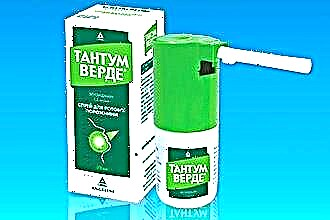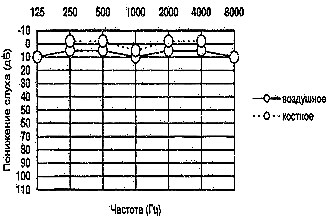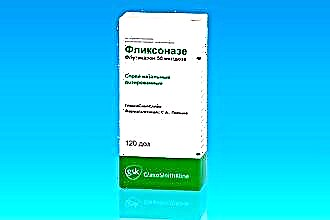Sore throat occurs in everyone, both in infants and in old age. There are no barriers to the development of pharyngitis, because there are many reasons for its occurrence. No matter how we try to warmly dress the child or protect him from infections, pharyngitis will find him everywhere. In infants, the diagnosis of the disease is difficult, because they still cannot tell what hurts, and when the symptoms appeared. In this regard, it is not recommended to independently treat pharyngitis in children.
 Features of manifestation and therapy for a disease depend on its cause. Here are just some of the causes and predisposing factors that are most often identified:
Features of manifestation and therapy for a disease depend on its cause. Here are just some of the causes and predisposing factors that are most often identified:
- bacterial inflammation. It can be primary when the infection occurs by airborne droplets. Microbes settle on the mucous membrane of the throat and provoke inflammation. Secondary infection is observed if, against the background of a viral disease, a bacterial pathogen joins, increasing the severity of the disease. In addition, bacterial pharyngitis can develop due to weakening of the immune system and exacerbation of chronic infectious laryngitis or sinusitis;
- viruses, penetrating the pharyngeal mucosa, secrete a toxin that causes local inflammation in the form of edema, hyperemia and hypersecretion. If toxins enter the bloodstream, a general reaction of the immune system develops, antibodies are produced and symptoms of intoxication appear;
- mushrooms. Activation and intensive reproduction of opportunistic candida fungi leads to pharyngomycosis. It often develops due to a violation of the microflora after prolonged use of antibacterial or hormonal agents;
- the effect of low temperatures (cold air, drinking cold drinks, getting wet in the rain or freezing in winter);
- inhalation of dry, polluted air, including through passive smoking;
- allergic reaction. Swelling and hyperemia of the oropharyngeal mucosa may appear after contact with an allergen, for example, inhaling pollen, playing with animals or taking medicine. In addition to throat symptoms, you may experience coughing, watery eyes, itching, and a rash on the skin.
Sore throat forms
 The clinical picture depends on the age of the child, the degree of immune protection, the cause, as well as the form of the course of pharyngitis. What is it like:
The clinical picture depends on the age of the child, the degree of immune protection, the cause, as well as the form of the course of pharyngitis. What is it like:
- acute - begins quickly with a sore throat, fever, body aches, moodiness or hysteria;
- chronic - differs in less pronounced symptoms and frequent exacerbations. During periods of remission, there is a slight tickling in the oropharynx and coughing;
- granular - characterized by the proliferation of lymphoid structures and hypertrophy of the oropharyngeal mucosa. Visually visible thickened lateral ridges, red nodular formations, which are formed from the altered epithelium. Clinically, this form is manifested by soreness, dryness and pain when swallowing, which radiates to the ear zone. A thick secret is produced that is difficult to cough up;
- atrophic - manifested by thinning, dryness, pallor of the mucous membrane, atrophic processes that cover the tissues and glands of the oropharynx. Dry crusts are located on the surface, cough worries, often proceeds in parallel with laryngitis;
- catarrhal - characterized by redness, swelling, looseness, mucosal infiltration and mucus production. Symptomatically manifests itself as discomfort, sensation of a foreign lump in the oropharynx and coughing.
Clinical manifestations
Symptoms of the disease may differ depending on the age of the children. Pharyngitis in a child over 2-3 years old manifests itself:
- subfebrile hyperthermia;
- headache;
- soreness when swallowing;
- lymphadenitis (closely located lymph nodes become swollen and sensitive when palpated);
- coughing;
- capriciousness.
Babies tolerate pharyngitis much harder than older children.
Pharyngitis in infants is harder to suspect, because the symptoms indicate not only the defeat of the throat mucosa. Among the possible clinical signs, it is worth highlighting:
- febrile or even hectic hyperthermia;
- sleep disturbance;
- frequent crying, hysteria;
- increased salivation;
- rhinitis;
- decreased appetite. The newborn may refuse to breast or bottle altogether;
- regurgitation;
- violation of intestinal function (diarrhea);
- rashes on the skin;
- redness of the conjunctiva and lacrimation.
Features of some forms of the disease:
| Pharyngitis form | Fever | Symptoms | Throat picture when viewed |
|---|---|---|---|
| Fungal | Rarely subfebrile, often absent | Erosion, cracks in the corners of the mouth, sore throat, unpleasant odor, perspiration, dryness. | The posterior pharyngeal wall is covered with a curdled white bloom, after removal of which a hyperemic erosive surface remains. |
| Allergic | Absent | Dry cough, lump in throat, sore throat | Swelling of the mucous membrane |
| Herpetic | Subfebrile or febrile fever lasting 7 days | Lymphadenopathy, pain when swallowing | On the tonsils and pharyngeal mucosa, vesicles with serous contents are visualized, which, after opening, leave erosion. They can spread to the cheeks and tongue. |
| Bacterial | Persistent febrile hyperthermia | Lymphadenopathy, headache, refusal to eat, severe sore throat, dyspeptic disorders | |
| Viral | It can reach 39 degrees, but within 2 days it decreases to subfebrile | Lymphadenopathy, lacrimation, rhinorrhea, aching muscles, joints, dry cough, hoarseness, soreness when swallowing | Hyperemia, swelling of the throat |
Complications
The younger the child, the higher the risk of complications.
Children are characterized by complications associated with the spread of infection to surrounding organs and the progression of inflammation in the oropharynx:
- a retropharyngeal abscess develops against the background of a weakened immune system and in the absence of treatment. It is manifested by difficulty swallowing, pain that radiates to the neck, ear and nasopharynx, as well as hectic fever;
- purulent otitis media develops as a result of the spread of infection through the auditory tube, due to which the child develops pain in the ear, increases the fever and decreases hearing. With the accumulation of purulent discharge in the ear cavity, the risk of membrane perforation increases. With the onset of suppuration, hyperthermia decreases;
- glomerulonephritis, rheumatism caused by the generalization of streptococcal infection in untreated bacterial pharyngitis;
Diagnostic rules
The main task of diagnostics is to identify the cause of the disease and carry out differential diagnostics between angina, diphtheria and other childhood diseases, which can be manifested by inflammation of the oropharynx.
Pharyngitis in children is diagnosed by a pediatrician, however, if necessary, consultation with an otolaryngologist, infectious disease specialist, rheumatologist or allergist may be required.
To make a diagnosis, anamnestic information, complaints and pharyngoscopy data are required. To identify complications, rhinoscopy, otoscopy, auscultation of the lungs and palpation of the lymph nodes are performed.
It is possible to establish the type of pathogenic microorganisms using microscopic and bacteriological examination. The material for analysis is a swab from the throat, crust or mucus.
Treatment directions
What absolutely can not be done when treating young children:
- use a spray and other types of throat irrigation for children under 2 years of age. This can provoke a spasm of the glottis, shortness of breath and shortness of breath;
- semi-alcohol compresses are prohibited for up to 3 years;

- should not be wrapped in a warm blanket with high hyperthermia, which will further worsen the heat exchange between the skin and the environment;
- gargling is not carried out until 5-7 years old until the child learns to correctly perform the procedure. Children under this age can choke on the solution, which will provoke a severe cough;
- Antipyretic drugs based on aspirin are not indicated for children. In addition, frequent use of these medications is also prohibited;
- warming procedures (rubbing, mustard plasters) are not carried out with a fever above 37.7 degrees.
High fever in young children can lead to seizures, vomiting, and confusion.
What can be prescribed in the treatment of pharyngitis:
- antibacterial agents - with a confirmed bacterial nature of the disease;
- antiviral drugs;
- antihistamines;
- hormonal medications (for severe allergies);
- antiseptic solutions for rinsing or irrigating the mucous throat;
- lozenges for sucking;
- inhalation;
- warming procedures.
Remember, taking medications will not lead to recovery if the provoking factor (cold or allergen) continues to act, and a certain regimen is not followed:
- bed rest for the first 3-4 days. The duration depends on the level of fever, the severity of the child's condition and the effectiveness of therapy;
- Drinking warm drinks should be an integral part of the treatment. Adequate fluid intake helps replace moisture loss through sweat, diarrhea, and shortness of breath. In addition, the liquid accelerates the elimination of toxins from the body, reducing the severity of intoxication and hyperthermia;
- protection from drafts and other cold factors;
- humidifying the air in the room and wet cleaning;
- healthy food (cottage cheese, cereals, chicken broth, fish, vegetables, herbs, fruits). Spicy, salty food, fried and fatty foods, carbonated drinks, chips, croutons and sweets are prohibited.
Local effect on the site of inflammation
You can buy the following medicines at the pharmacy:
- for irrigation of the throat - Orasept, Tantum Verde, Ingalipt, Bioparox;

- for rinsing - Givalex, Furacilin, Chlorhexidine;
- throat mucosa treatment - Lugol, Iodinol;
- lollipops - Faringosept, Strepsils, Lisobakt.
If children do not know how to dissolve lollipops, you can grind them into powder and pour a small amount on the mucous membrane of the cheeks.
Gargling can be done with herbs:
- calendula, chamomile, plantain, sage;
- dandelion, birch leaves, pine buds;
- St. John's wort, oak bark, linden;
- tincture of eucalyptus (20 drops are diluted in warm water with a volume of 250 ml).
Rinses are repeated every 1.5 hours. When mucous discharge from the nose appears, rinsing with sea water (Aqua Maris, No-salt, Humer) and instillation with Delufen, Vibrocil or Pinosol are allowed.
Suitable for inhalation:
- alkaline still water or saline solution to moisturize the mucous throat. For a nebulizer, 4 ml is enough;
- Interferon powder;
- propolis with wax (1.5: 1) is heated in a water bath;
- decoction of chamomile, mint, plantain, eucalyptus, sage (10 g per 300 ml water volume);
- boiled potatoes with the addition of soda at the tip of a knife;
- essential oil (pine, fir, eucalyptus) - 2 drops are dissolved in 300 ml of hot water.
Systemic treatment
 Of antiviral drugs, Novirin, Nazoferon, Anaferon or Arbidol are allowed. Bacterial inflammation is treated with Zinnat, Azithromycin or Amoxiclav. With fungal pharyngitis, Pimafucin is prescribed. In the case of an allergic origin of the disease, it is advisable to take Zodak or Loratadin. A high fever with pharyngitis in a child can be stopped with Nurofen, Paracetamol, Panadol (syrups) or Efferalgan suppositories.
Of antiviral drugs, Novirin, Nazoferon, Anaferon or Arbidol are allowed. Bacterial inflammation is treated with Zinnat, Azithromycin or Amoxiclav. With fungal pharyngitis, Pimafucin is prescribed. In the case of an allergic origin of the disease, it is advisable to take Zodak or Loratadin. A high fever with pharyngitis in a child can be stopped with Nurofen, Paracetamol, Panadol (syrups) or Efferalgan suppositories.
The rise in temperature is accompanied by profuse sweating and increased breathing. A warm drink is recommended to reduce fever:
- tea with honey, raspberries, currants;
- rosehip broth (7-8 chopped berries are poured into a thermos with 450 ml of boiling water);
- infusion of St. John's wort;
- warm milk with the addition of soda (1 g per 300 ml of milk);
- warm mineral still water;
- compotes, fruit drinks, jelly.
In a chronic course, when the proliferation of lymphoid structures in the pharynx is observed, laser therapy, cauterization with silver nitrate, cryodestruction of granules and hypertrophied lateral ridges are indicated. In the complex of therapy for chronic sore throat, general strengthening drugs, vitamins and immunomodulators are prescribed.
Prophylaxis
It will not be possible to completely prevent the development of pharyngitis, because the provoking factors of the disease are widespread. Preventive measures can reduce the incidence of diseases of the ENT organs, prevent complications and quickly cope with the infection:
- the child needs to be taught to observe personal hygiene (washing hands is necessary after visiting public places, walking, before eating, after contact with a sick person). It is also necessary to brush your teeth twice a day, because a chronic infection in the oral cavity in the form of caries or gingivitis increases the risk of pharyngitis;
- if one of the family members is sick, he should be allocated separate dishes, hygiene products and use a disposable mask;
- the child should be protected from the influence of dust (as much as possible). To do this, wet cleaning, airing the room and humidifying the air in the children's room should be carried out regularly;
- children need to be taught to close their mouths when coughing and sneezing;
- when using cloth scarves with a cold, their regular change is required;
- going to kindergarten in case of illness is not recommended. This will protect peers from the disease and prevent secondary infection of a sick child;
- you need to walk with children regularly, since the organs must receive a sufficient amount of oxygen;
- periodically you need to carry out vitamin therapy;
- nutrition should be vitamin, you need to control the consumption of light carbohydrates and flour products;
- if possible (taking into account concomitant diseases), it is necessary to temper the child.
It is necessary to strengthen the child's immunity from birth, and then the children will be happy and the parents calm.





